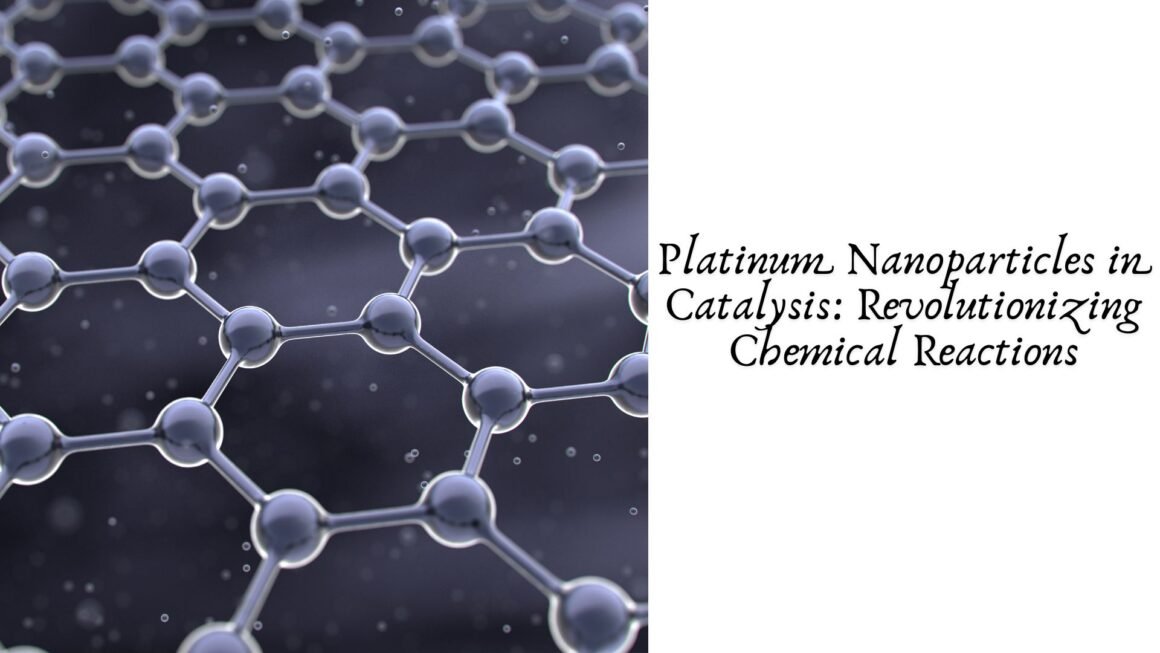Platinum has long held a revered place in the field of catalysis due to its unique chemical properties. However, with the advent of nanotechnology, platinum nanoparticles (PtNPs) are now playing a transformative role in the way chemical reactions are designed and optimized. Their exceptionally high surface area, unique quantum properties, and tunable reactivity make them indispensable in modern catalytic systems. This article explores how platinum nanoparticles are revolutionizing catalysis across various industries, including energy, environmental science, and pharmaceuticals.
Understanding the Basics: What Are Platinum Nanoparticles?
Platinum nanoparticles are ultra-small particles of platinum metal, typically ranging from 1 to 100 nanometers in size. At this scale, platinum exhibits different physical and chemical properties compared to its bulk counterpart. The high surface-to-volume ratio dramatically increases the number of active sites available for catalysis, making PtNPs far more efficient per unit mass than bulk platinum.
These nanoparticles can be synthesized using several methods, including chemical reduction, sol-gel processing, electrochemical techniques, and biological synthesis. Their shape (spheres, rods, cubes), size, and surface modifications can all be controlled during synthesis to tailor their catalytic behavior.
Why Platinum? The Superiority of PtNPs in Catalysis
Platinum is prized for its:
- High catalytic activity: PtNPs are highly effective in breaking chemical bonds, especially in redox reactions.
- Thermal stability: They retain catalytic properties even at elevated temperatures.
- Corrosion resistance: Platinum resists oxidation, making it ideal for long-term catalytic applications.
- Versatility: PtNPs can catalyze a wide range of reactions, from hydrogenation to oxidation and beyond.
What sets platinum nanoparticles apart is how these inherent properties are amplified at the nanoscale. With a higher fraction of surface atoms, they exhibit enhanced catalytic efficiency, often with less material usage.
Industrial Applications: Where PtNPs Are Making a Difference
Automotive Catalysts
PtNPs are a cornerstone in the development of catalytic converters used in internal combustion engine vehicles. They help convert harmful gases like carbon monoxide (CO), nitrogen oxides (NOₓ), and unburned hydrocarbons into less toxic emissions. Compared to bulk platinum, PtNPs offer:
- Lower loading requirements
- Faster reaction kinetics
- Better heat resistance
This results in cleaner emissions and longer-lasting catalytic converters.
Fuel Cells and Hydrogen Economy
Platinum nanoparticles play a critical role in proton-exchange membrane fuel cells (PEMFCs). They catalyze the hydrogen oxidation reaction at the anode and the oxygen reduction reaction (ORR) at the cathode.
The advantages include:
- High electrochemical activity
- Greater efficiency in energy conversion
- Enhanced durability when alloyed with other metals (e.g., Pt-Co, Pt-Ni)
PtNPs are thus central to advancing hydrogen-based clean energy technologies.
Petrochemical and Refining Industry
In petroleum refining, platinum-based catalysts are widely used for reforming and isomerization reactions that improve fuel quality. With PtNPs, the selectivity and efficiency of these processes can be finely tuned, leading to better yields and reduced energy consumption.
Environmental Remediation
PtNPs are also employed in catalytic degradation of pollutants and water purification. They can catalyze reactions that detoxify harmful chemicals like nitrites, nitrates, and volatile organic compounds (VOCs).
For example:
- Catalytic ozonation: PtNPs help break down persistent organic pollutants.
- Photocatalysis: Coupling PtNPs with semiconductors enhances light-driven environmental cleanup.
Pharmaceutical Synthesis
In the pharmaceutical industry, PtNPs are used in the selective hydrogenation of complex organic molecules. Their ability to work under mild conditions with high selectivity makes them ideal for fine chemical synthesis.
Enhancing Performance: Alloying and Surface Modification
Researchers are constantly innovating ways to improve the catalytic performance of PtNPs. Two common strategies include:
- Alloying: Mixing platinum with other metals (e.g., palladium, gold, iron) to enhance catalytic properties or reduce platinum usage.
- Surface functionalization: Modifying the nanoparticle surface with ligands or supports (e.g., carbon, silica, graphene) to improve stability, dispersion, and activity.
Such techniques allow for the design of catalysts with higher activity, selectivity, and recyclability.
Challenges and Future Prospects
Despite their tremendous potential, PtNPs face several challenges:
- High cost: Platinum remains one of the most expensive metals, prompting efforts to reduce its usage.
- Aggregation: Nanoparticles tend to clump together over time, reducing their effective surface area.
- Deactivation: Catalysts can become poisoned or fouled, especially in complex reaction environments.
To address these issues, research is focusing on:
- Developing core-shell structures to preserve active sites
- Using nano-alloys to reduce platinum content without compromising performance
- Exploring green synthesis methods to reduce environmental impact
In the future, machine learning and AI-driven catalyst design may also play a key role in identifying optimal PtNP configurations for specific applications.
Conclusion
Platinum nanoparticles are undeniably revolutionizing catalysis by offering unmatched efficiency, selectivity, and versatility across a wide array of chemical reactions. From enabling cleaner emissions to powering hydrogen fuel cells and advancing drug synthesis, PtNPs are shaping the future of industrial chemistry. While challenges remain, ongoing innovation in nanomaterial science promises to unlock even more sustainable, cost-effective, and high-performance catalytic solutions.

